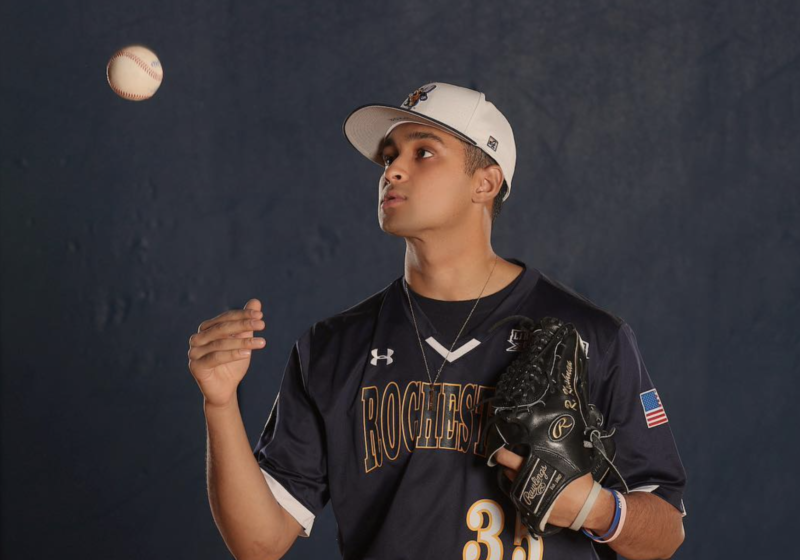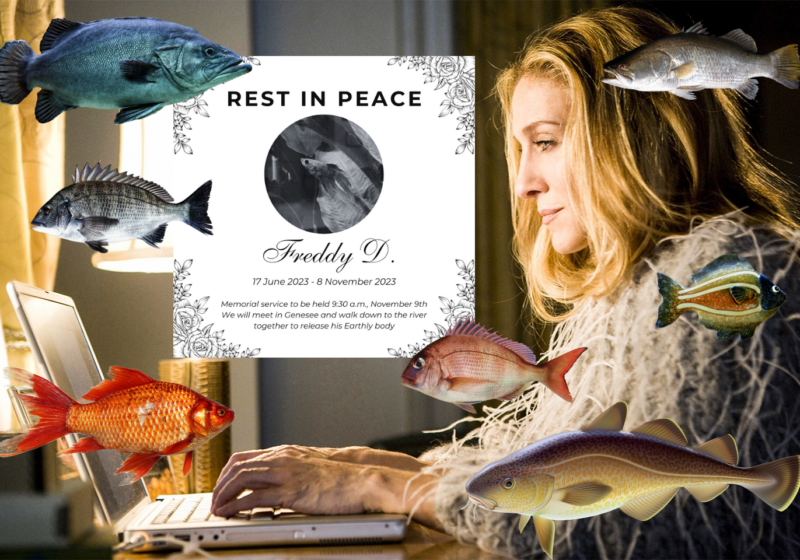UR student Roy Krishnan didn’t feel the searing pain of his arm popping as he pitched for college recruiters during one of the most important baseball showcases of his athletic career. A highly ranked pitcher in high school, Krishnan, a junior at the time, wanted to show his top choice Dartmouth College that he deserved a spot on their team.
But after throwing 86 miles an hour in the first inning, he was suddenly hitting 76 miles an hour in the second. It was only when the adrenaline subsided that he realized that he had dislocated his arm.
“Maybe I just got tired. I couldn’t feel anything. I went home the next day. I woke up and my arm hurt so badly, and I was like, ‘Oh my God, this is going to be a problem.’ And then I went to the doctor and he’s like, ‘You have a torn UCL,’” Krishnan said. “And then all of a sudden, Dartmouth wasn’t an option for me anymore.”
Krishnan spent the next 18 months recovering from Tommy John surgery and trying to decide what his next move would be. But during the rehabilitation process, as an athlete interested in the pre-med track, he felt frustrated by the lack of answers his doctors were giving him regarding what treatment was being used and why.
“A lot of the time, the doctor, physiotherapist, or something would say, ‘We’re going to do this.’ And I said, ‘Why?’ And sometimes there was no rationale for it,” Krishnan said. “And it’s just like, that’s the way we’ve always done things. And I think that’s the most dangerous quote of all time — the way we’ve always done things.”
In an effort to understand why certain treatments were used for sports injuries and to support his own rehabilitation process, Krishnan ended up creating his own business: Liquid Sportslab, formerly known as Liquid Biomechanics.
In September 2020 Krishnan started Liquid Sportslab, a data-driven biotech startup that uses quantitative and qualitative measures to provide individualized performance reports for athletes who seek their services.
But the road to establishing his own startup was long. It started in the summer of 2018 when he worked as an intern for Driveline Baseball, a baseball player development organization, in Washington State. Initially, he had joined the company during his rehabilitation process as a primary test subject for the team but was later offered an internship, doing math and physics research on baseball.
When Krishnan returned to UR the following semester, he was walking in the Stacks when he saw someone reading his research paper. He couldn’t believe that another student (Maura McCartney ’19) was actually reading a paper he wrote that had around 300 views. McCartney then became a catalyst for his career as she introduced him to her superiors at ARCCA Incorporated, a Pennsylvania-based engineering and biomechanics research firm.
In November 2019, Krishnan joined a team within ARCCA that works in the biomechanics and sports industry as an engineering intern. But executives at the company saw his potential as an entrepreneur and gave him the opportunity to travel across the country to pitch his ideas to investors. Krishnan left the company in November 2020.
“I just wanted to be able to have that ownership because there’s also a couple of things I didn’t love doing, but I had to do because we were controlled by this giant company,” Krishnan said. “So I didn’t like doing things a certain way; I didn’t like not being as informal with my employees as I like. I didn’t like people feeling uncomfortable in certain situations because they felt like they couldn’t pass the social hierarchy. That is business. I don’t like that kind of stuff, and maybe I’m naive and too young to understand that kind of stuff, which is […] all everyone else says about me anyway.”
After his stint at ARCCA, Krishnan was hired by Reboot Motion in 2020, a sports biomechanics company based in Silicon Valley, as a Biomechanics and Software Consultant where he worked on baseball biotechnology.
“I’ve been working for them for, I think, four months and we’re building out these crazy pipelines to help MLB teams,” Krishnan said. “If you’ve ever seen the movie “Moneyball,” it’s literally: A guy uses statistical analysis to win baseball games instead of spending a lot of money on a big player. He goes and finds […] the best value players.”
But Krishnan still didn’t own any of the things that he was producing. He was helping startups and large companies create cutting-edge biotechnology to pioneer a new school of athletic progression, raised $1.8 million for them, and none of it was his.
“This is my third company,” Krishnan said. “This is the third company that I’m working for, that I am doing stuff that I don’t own. I don’t own the [intellectual property] on anything I built. And that sucks. And so I was like, let me just do it myself. And whatever happens happens, I know I’ll be a lot happier owning my own stuff.”
It was only at the end of September 2020 that he officially started Liquid Sportslab. He didn’t have a bachelor’s degree, access to $1.8 million, or MLB players right off the bat, but he did have several years of experience within the biomechanics field.
And while he spent those three years getting his own startup off the ground, Krishnan also juggled STEM courses, being the president of Psi Upsilon, research, internships, TA positions, and being a pitcher on the UR Varsity Baseball team.
“It was all at the same time and it was a lot. And honestly, I couldn’t manage it. I thought I could, and […] I was president for two terms. Most of this was during COVID[-19]. And I just cut back. I compartmentalize my time really, really well. But I also […] finally admitted to myself, maybe 10 months into doing all 10 of those things, that I couldn’t do all of those things to the best of my ability,” Krishnan said.
But with only two classes left to formally finish his time at UR, Krishnan is focused only on Liquid Sportslab. As founder and CEO, he is involved in almost every aspect of the company from fundraising to the back-end technology projects where he works closely with clients.
The company sends sensors to its clients, currently three MLB teams, that pick up athletes’ movements and send the data to their office in Rochester. At times, clients will fly out to their office in upstate New York, where the team uses an infrared camera to monitor athletic performance of the clients.
Essentially, the team gathers the data, processes it through their algorithm, and sends back the report to the team, who then analyzes the data and creates a plan to improve performance. They apply the principles of math, physics, computer science, biomechanics, and sports to help baseball players reach their peak performance.
“We’ve spent a lot of time this year working with pitchers and MLB that like increasing spin rates,” Krishnan said. “So making a ball using physics to make balls move in different directions. So that’s been really cool, especially when you see your clients on TV. And my favorite thing in the world is that the announcers will be like, when did he get this new pitch? I would be like […], that’s us. We’re doing that.”
Krishnan is currently working with an athlete who is coming back from Tommy John surgery and as somebody who went through the same rehab process, he understands how challenging it is. “I didn’t make it back. […] I tried my best, but I wasn’t […] as good as I was before afterwards,” Krishnan said. “But now, we have an opportunity to help a lot of people out. […] We’ve got an opportunity to like, change the rhetoric in a lot of ways. And I think we’re slowly doing it.”






